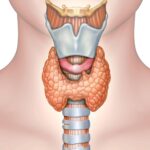
Labor is the physiological process by which a fetus and placenta are expelled from the uterus through the birth canal. It is a dynamic event characterized by a series of coordinated uterine contractions, cervical changes, and the eventual delivery of the fetus. Labor is typically divided into three stages: the first, second, and third stages.
First Stage of Labor
The first stage of labor involves the onset of regular uterine contractions and cervical changes until full cervical dilation (10 cm). It is subdivided into two phases: the latent phase and the active phase.
Latent Phase:
- This phase starts with the onset of labor and is characterized by irregular or mild contractions that become progressively stronger and more frequent.
- Cervical dilation is gradual (0-3 cm) and is accompanied by cervical effacement (thinning).
- The duration of the latent phase can be variable, lasting several hours to days, particularly in first-time mothers (primigravida).
Active Phase:
- The active phase begins when the cervix is approximately 4 cm dilated and progresses until full dilation (10 cm).
- Contractions become more intense, regular (usually every 3-5 minutes), and last longer (45-60 seconds).
- Cervical dilation occurs at a faster rate (around 1 cm/hour in primigravida and up to 1.5 cm/hour in multigravida).
- The fetus’s descent through the birth canal is also monitored during this phase.
Second Stage of Labor
The second stage of labor begins with full cervical dilation (10 cm) and ends with the delivery of the fetus. It is characterized by:
- Descent and rotation of the fetal head through the birth canal due to uterine contractions, maternal pushing efforts, and pelvic muscle activity.
- Expulsive efforts by the mother: Maternal pushing is usually directed by the obstetrician when the fetal head reaches the pelvic floor (crowning).
- Duration: This stage may last from a few minutes to over an hour, depending on whether it is the mother’s first vaginal delivery. In a primigravida, the second stage can last up to 2-3 hours, while in a multigravida, it is typically shorter (30 minutes to 1 hour).
Mechanisms of labor (Cardinal Movements):
- Engagement: The fetal head enters the pelvic inlet.
- Descent: The fetal head descends through the maternal pelvis.
- Flexion: The fetal chin moves closer to the chest, facilitating the passage of the head through the birth canal.
- Internal rotation: The fetal head rotates to align with the pelvic outlet.
- Extension: The head extends as it passes under the pubic symphysis.
- External rotation (restitution): After delivery of the head, the head realigns with the fetal body.
- Expulsion: Delivery of the fetal shoulders and body.
Third Stage of Labor
The third stage of labor involves the delivery of the placenta and fetal membranes. This stage is typically divided into two phases:
Placental separation: The placenta detaches from the uterine wall due to continued uterine contractions and myometrial retraction. Signs of placental separation include:
- A sudden gush of blood.
- Lengthening of the umbilical cord.
- The uterus becoming firm and globular.
Placental expulsion: The placenta is expelled, usually within 5-30 minutes after the birth of the baby. Active management of the third stage (e.g., administration of oxytocin) helps reduce the risk of postpartum hemorrhage.
Pain Management in Labor
Pain during labor arises from uterine contractions, cervical dilation, and pressure on the birth canal. Pain management options include:
- Non-pharmacologic methods: Breathing techniques, massage, hydrotherapy, and support from a birth partner.
- Pharmacologic methods:
- Epidural analgesia: Commonly used, provides effective pain relief while allowing the mother to remain awake and alert.
- Opioid analgesics: Can be used intravenously for pain relief but may cause sedation and respiratory depression in the neonate.
- Nitrous oxide (Entonox): Provides mild pain relief and is self-administered by the mother.
- Local anesthetic nerve blocks: Pudendal nerve block can be used for pain relief in the second stage of labor.
Complications During Labor
- Dystocia (Difficult Labor): Refers to prolonged or obstructed labor due to:
- Problems with the power: Inefficient uterine contractions or maternal pushing.
- Passenger problems: Abnormal fetal presentation (e.g., breech), large fetal size (macrosomia), or shoulder dystocia.
- Passage issues: Pelvic deformities or narrow birth canal.
- Fetal distress: Identified by fetal heart rate abnormalities, meconium-stained amniotic fluid, or abnormal fetal blood sampling.
- Postpartum hemorrhage (PPH): Excessive bleeding (>500 ml for vaginal birth and >1000 ml for cesarean) due to uterine atony, retained placenta, or trauma to the birth canal.
Induction and Augmentation of Labor
- Induction: Initiation of labor artificially before its spontaneous onset, usually for medical indications such as:
- Post-term pregnancy (>42 weeks).
- Pre-labor rupture of membranes (PROM).
- Preeclampsia or other maternal conditions.
- Augmentation: Stimulation of labor after it has begun but is progressing slowly. Methods include:
- Oxytocin infusion to increase the frequency and strength of contractions.
- Amniotomy (artificial rupture of membranes) to accelerate labor.
Intrapartum Monitoring
Continuous fetal heart rate monitoring and regular assessment of uterine contractions and cervical progress help assess labor progression and detect any potential complications early.
Labor is a complex, multifactorial process that requires continuous monitoring, support, and sometimes medical intervention to ensure the safety of both the mother and the fetus.












